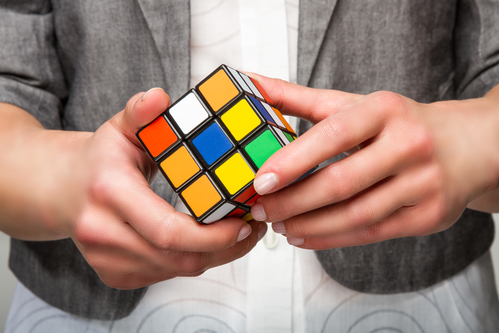
5 Alternatives to Fidget Spinners
 It has taken the adolescent world by storm: this spinning toy that claims to relieve stress and help students with attention deficits and other disorders to focus. Indeed, the fidget spinner has become ubiquitous in schools, camps, and homes across the country, and continues to be promoted as a way to help kids by releasing nervous energy and promoting concentration. Not to be a downer, and while, admittedly, something like this is a great concept, I can’t help but point out that there is no scientific evidence that fidget spinners are effective as a treatment for autism, ADD, ADHD, anxiety disorders, or any other psychological issue. Indeed, many schools have deemed the toy a distraction, and banned them all together. And there have even been horror stories of kids swallowing the well-intentioned toy. The good news is that there are numerous alternatives to the fidget spinner, so while the toy itself may have taken a hit, the idea of fidget toys as having value has not. According to psychologist Steven Myers, “within anxiety populations, anything that serves as a distraction or source of comfort could work.” So what alternatives are there to the fidget spinner? Below, we explore the options.
It has taken the adolescent world by storm: this spinning toy that claims to relieve stress and help students with attention deficits and other disorders to focus. Indeed, the fidget spinner has become ubiquitous in schools, camps, and homes across the country, and continues to be promoted as a way to help kids by releasing nervous energy and promoting concentration. Not to be a downer, and while, admittedly, something like this is a great concept, I can’t help but point out that there is no scientific evidence that fidget spinners are effective as a treatment for autism, ADD, ADHD, anxiety disorders, or any other psychological issue. Indeed, many schools have deemed the toy a distraction, and banned them all together. And there have even been horror stories of kids swallowing the well-intentioned toy. The good news is that there are numerous alternatives to the fidget spinner, so while the toy itself may have taken a hit, the idea of fidget toys as having value has not. According to psychologist Steven Myers, “within anxiety populations, anything that serves as a distraction or source of comfort could work.” So what alternatives are there to the fidget spinner? Below, we explore the options.
Rubber Bands: This will save you a couple of bucks. Believe it or not, rubber bands have long been used for people struggling with anxiety. The simple act of lightly snapping the band against your wrist when anxious thoughts creep in can help you to replace them with more soothing thoughts. Dr. Myers points out that rubber bands are one of the most common anxiety-relieving tools used among adults.
Stress Balls: Good luck swallowing one of these: a much safer option than the fidget spinner, the classic stress ball can do more than soothe angry or anxious thoughts. Kids with ADD or ADHD can use them as stimulation toys to keep their hands busy while focusing on other information, like what the teacher is saying. You might also consider the bead ball, a more tactile and therapeutic version of the stress ball, offering sensory nodules to help keep distracted students stimulated.
Rubik’s Cube: This pocket puzzle is a great option for anxiety sufferers. A big part of coping with anxious thoughts is distraction. The focus on the puzzle can take the mind off more negative thoughts. Not only that, but a puzzle is certainly more intellectually stimulating than a plastic spinner.
Chewable Pencil Topper: Yes, this is a thing—and it’s much safer than gnawing away at the wood on a pencil. This ingenuous product, perfect for dealing with classroom distraction, slips on the eraser end of the pencil to offer the chewer an opportunity to work his teeth, while staying focused on the lesson. Where was this when I was a kid?
Smooth Stones: Running your fingers over a smooth stone (which, by the way, you can pick up off the ground and save some money), can have therapeutic effects by releasing pent-up energy. In fact, the great Buddhist teacher Thich Nhat Hanh even has a book, A Handful of Quiet, designed for kids around the idea of “pebble meditation,” a hands-on way to experience mindfulness.
Before you shell out five or ten bucks for a fidget spinner, don’t underestimate the therapeutic power of simple things like rubber bands and stones or of innovative products like chewable pencil toppers and pocket puzzles. For the distracted or anxious child, a fidget spinner is not the only option.
Written by Phil Lane
Contact us today to learn more about how our tutors can help your child this summer!



